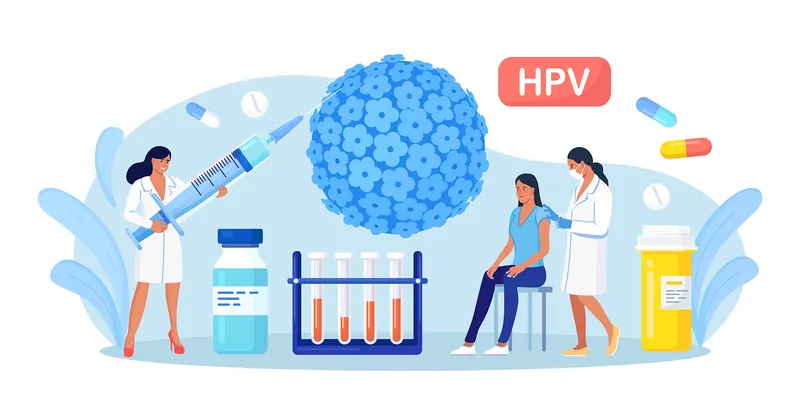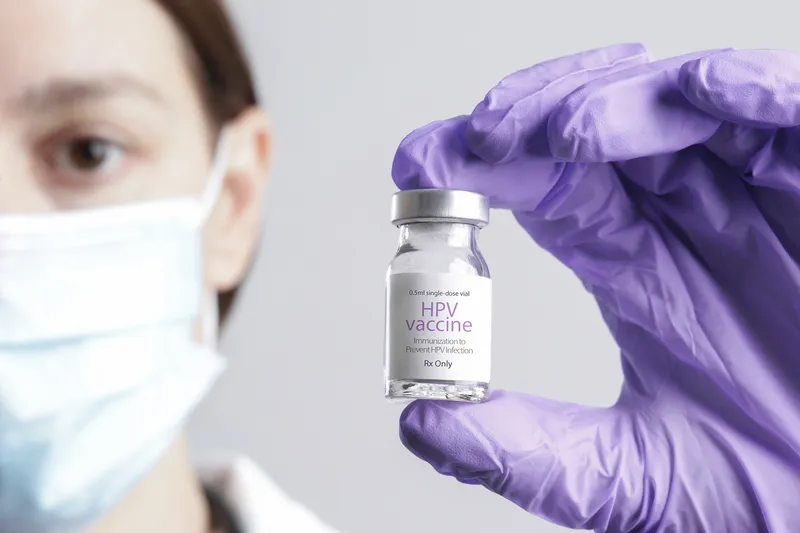Decoding the HPV vaccine: Why it matters now for women in India
Cervical cancer is the second most common cancer in India, where an estimated 1,23,907 new cases are reported each year, leading to 77,348 deaths. The HPV vaccine is the way to prevent it.
Saloni Trivedi, a Communication Specialist, first encountered the topic of cervical cancer when she read about a well-known Indian politician diagnosed with it. This prompted her to explore the preventive measures available, leading her to discover the significant role of the human papillomavirus (HPV) vaccine.
“Cervical cancer results from uncontrolled cell growth in the cervix (the entrance to the uterus from the vagina), primarily caused by persistent HPV infection, a common sexually transmitted infection,” explains Dr Puja Sharma, Senior Consultant Obstetrics and Gynaecology, Daffodils by Artemis, New Delhi.
After postponing the vaccination for several years, Trivedi opted for Gardasil 9—the latest available vaccine, in July 2022. She completed the three-dose regimen in January 2023, with each dose costing about Rs 11,000.
“I delayed taking the vaccine as I didn't find many women who could guide me. No woman in my family had taken it nor was anyone diagnosed with the disease. There was also a stigma around 'if I really needed to take it?'. But when I asked in my social circles, I found out that some of my female friends had taken the vaccine,” she tells HerStory.
Cervical cancer is the second most common cancer in India, where an estimated 1,23,907 new cases are reported each year, leading to 77,348 deaths.
The early signs of cervical cancer include abnormal vaginal bleeding, pelvic pain, and pain during intercourse, and experts suggest regular cervical cancer screenings for its early detection.
“Pap smears and HPV tests are common methods for checking cervical health. Women should undergo routine screenings, starting around the age of 21 or as recommended by the doctors,” Dr Sharma adds.
What is HPV?
HPV is a group of more than 200 related viruses. The sexually transmitted HPV types fall into two groups—low risk and high risk. Among the 12 high-risk HPV types, HPV 16 and HPV 18 are responsible for the majority of HPV-related cancers and some anogenital cancers (anus, vulva, vagina, and penis), as well as head and neck cancers.
According to the Rajiv Gandhi Cancer Institute and Research Centre, HPV types 16 and 18 account for 73% of cervical cancers globally and 80-85% of cervical cancers in India.
On the other hand, low-risk HPV types generally do not lead to cancer. Although, a few low-risk types can cause warts in the genital, anal, oral, or throat areas.
What is the HPV vaccine? Why is it important?
Dr Sharma explains that the HPV vaccine is most effective when administered before a person becomes sexually active and exposed to the virus. “If a person has already been exposed to certain types of HPV, the vaccine may be less effective in preventing infection with those specific types.”
Agreeing, Dr Kumardeep Dutta Choudhury, Senior Consultant, Department of Medical Oncology at Action Cancer Hospital, New Delhi, says the vaccine stimulates the immune system to produce antibodies against HPV, preventing infection and the subsequent development of cervical cancer.
Although there are no serious side effects to the vaccine, experts caution that mild side effects, including pain at the injection site, fever, and nausea, can occur.

Cervical cancer is the second most common cancer in India
In 2006, the US FDA gave license to Gardasil— a quadrivalent vaccine that targets four strains of HPV. Marketed by Merck, the vaccine has been available in India since 2008. The Gardasil 9 vaccine, licensed for use in India since 2018 prevents infection with nine HPV types.
Meanwhile, Pune-based Serum Institute of India, in partnership with the Department of Biotechnology, the Biotechnology Industry Research Assistance Council (BIRAC), and the Gates Foundation, launched Cervavac in 2003. It is touted as India's first quadrivalent HPV vaccine and combats cervical cancer by targeting four HPV strains.
According to Dr Sharma, HPV vaccination is administered in a series of two or three doses, with the first dose administered at the age of 11-12 years old. In fact, the vaccine can be given as early as age nine years.
The second dose is administered after a recommended interval of 6 to 12 months. Some may also need a three-dose series, based on factors like age at the initial dose.
Factors holding back women
Misinformation, stigma, and healthcare disparity have been major obstacles in the path of awareness around HPV vaccination. As per the National Family Health Survey (NFHS 5), the 2030 elimination target for cervical cancer will map a long journey, as to date, less than 1% of Indian girls are vaccinated against HPV.
Gynaecologist Dr Teena Anne Joy says that misinformation about the vaccine often raises concerns about its safety and efficacy. Some women believe that they are at a lower risk of acquiring HPV infections and related cancers, leading to a perception that it is unnecessary.
For many, financial constraints and accessibility can be a barrier.
Recalling her discussion with a doctor, 24-year-old Kashish Sharma says she was told to pay over Rs 10,000 for an HPV vaccine dose. Having just started her job, she could not afford it at that time.
“The doctor never emphasised much on the importance of getting an HPV vaccine… I wasn’t in a position to pay that much for a vaccine about which I knew so less,” she adds.
According to Dr Joy, to date, India has been fully dependent on foreign manufacturers for HPV vaccines. Other related vaccines available in India cost over Rs 5,000, whereas Cervavac costs Rs 2,000 per vial of two doses.
Solving a country-wide problem
Campaigns, celebrity endorsements, affordable options, collectively amplified discussions, dismantled barriers, and encouraging dialogue around HPV vaccination can help spread awareness of cervical cancer and the HPV vaccine, says Dr Shweta Mendiratta, Senior Consultant, Department of Obstetrics and Gynecology, Amrita Hospital, Faridabad
Last year, the government had written to all states and union territories to create an awareness movement on the prevention of cervical cancer and the importance of the HPV vaccine among female students across India.
In fact, the National Technical Advisory Group for Immunisation (NTAGI) has recommended the introduction of the HPV vaccine in the Universal Immunisation Programme (UIP) for 9-14-year-old adolescent girls administered primarily through schools.

Cervavac is India's first quadrivalent HPV vaccine that targets four HPV strains.
According to the government proposal, girls who are unable to attend school on the campaign day would be given the vaccine at a healthcare facility, while for out-of-school girls, the campaign would be conducted through community outreach programmes.
Dr Joy also believes conducting targeted education campaigns that provide accurate information about HPV both at the school level and community level can bring about a change in a positive direction.
“With increased media engagement, more social media users destigmatising the topic, and increased parental involvement at a household level—a lot can be achieved in reducing the burden of cervical cancer in the country,” she adds.
According to Dr Sharma, the low-cost HPV vaccine manufactured by the Serum Institute of India is likely to increase vaccine accessibility to girls of all ages in India.
“Affordability often positively correlates with higher vaccine intake, especially in regions with financial constraints, potentially contributing to increased vaccination rates and improved overall public health,” she says.
Edited by Suman Singh







